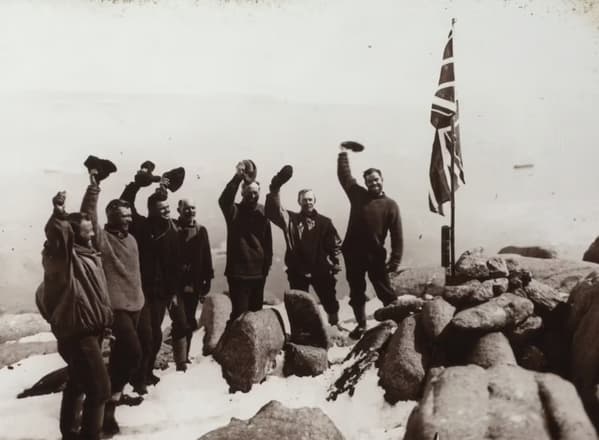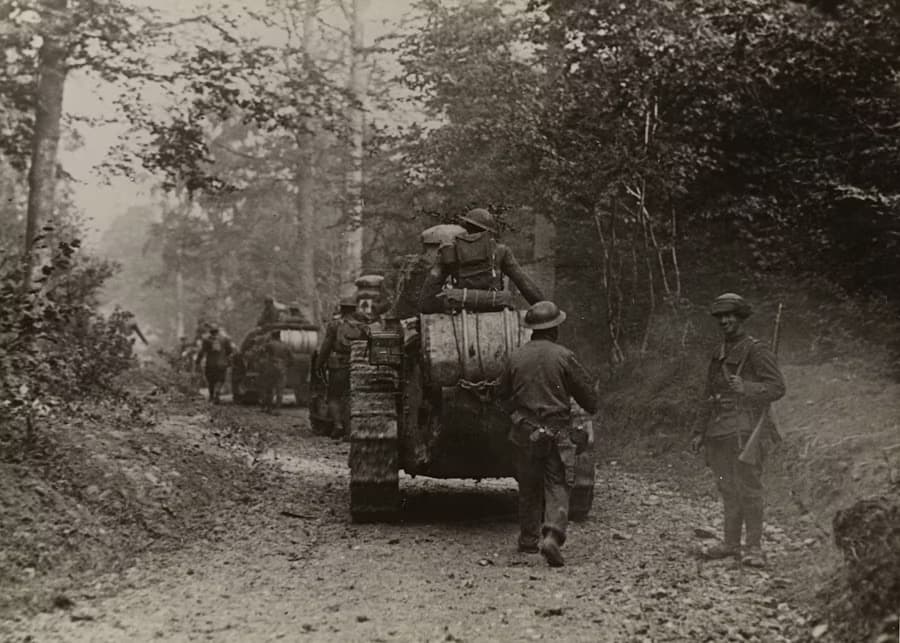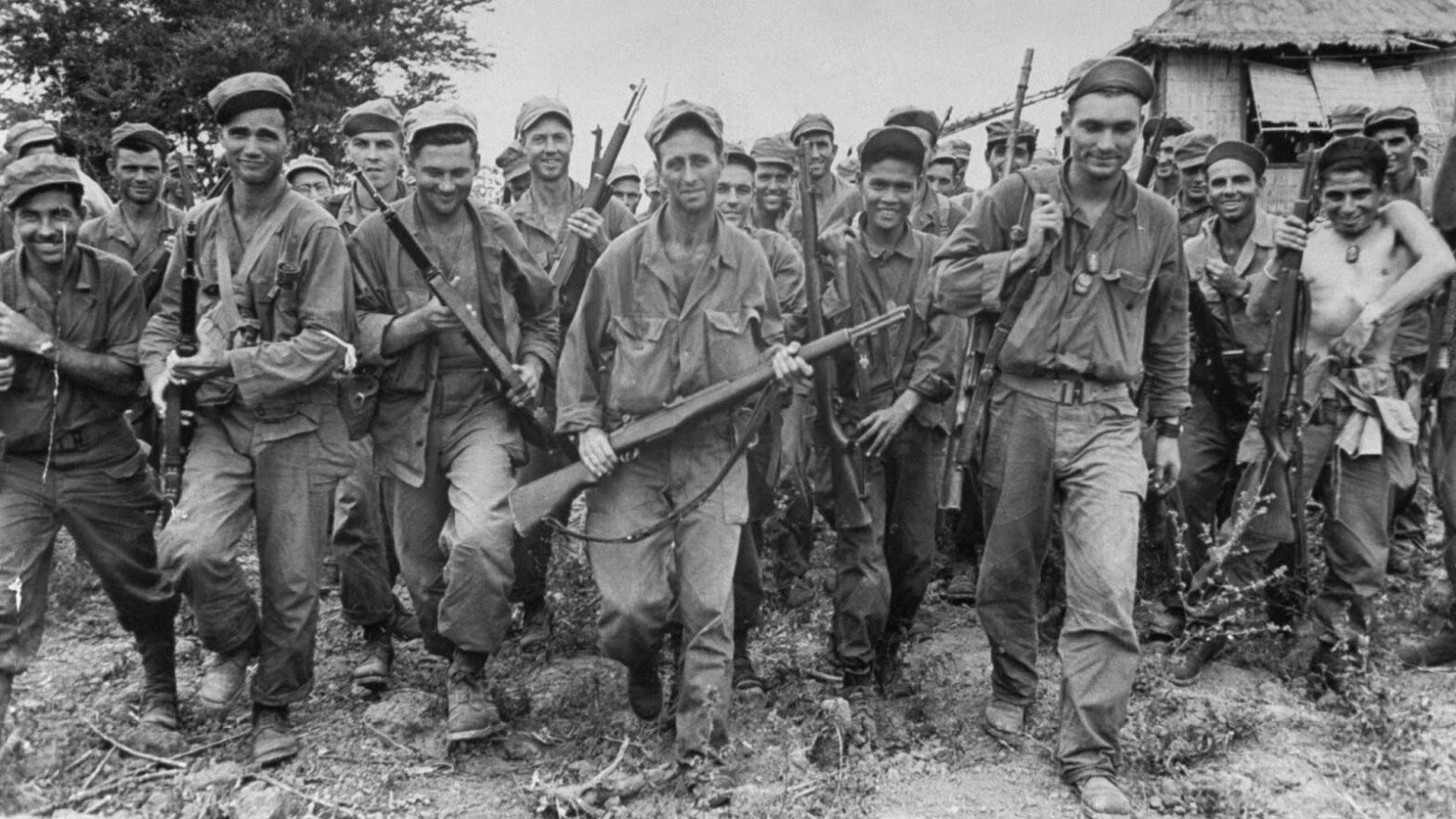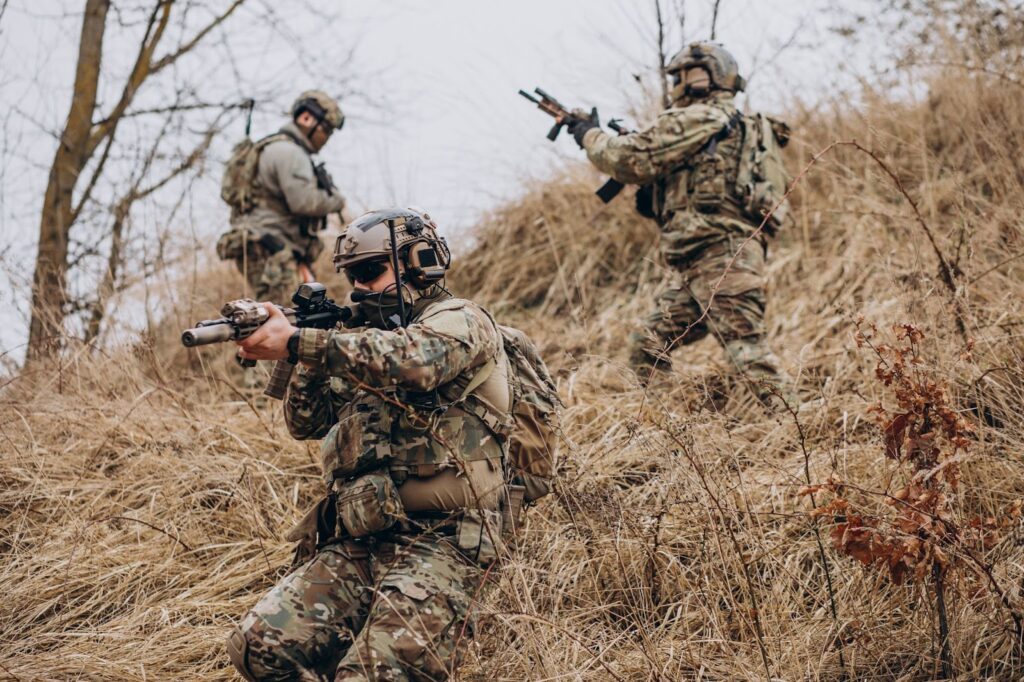In the crucible of World War II, the 761st Tank Battalion, known as Patton’s Panthers, carved a legacy of courage and resilience that shattered racial stereotypes and reshaped military history. As the first African American armored unit to see combat, these soldiers faced not only the enemy’s fire but also the prejudice of their nation, proving their mettle across 183 grueling days in Europe. From their formation in 1942 to their pivotal role in liberating towns and breaching the Siegfried Line, the Black Panthers’ story is one of grit, sacrifice, and triumph against all odds.
Forged in Adversity
The 761st Tank Battalion was born in a segregated America, where African American soldiers were often relegated to non-combat roles. Activated on April 1, 1942, at Camp Claiborne, Louisiana, the unit trained relentlessly for two years, determined to prove its worth. Their motto, “Come Out Fighting,” reflected their resolve to overcome both external enemies and internal biases.
Training Amidst Prejudice
At Camp Claiborne and later Camp Hood, Texas, the 761st endured harsh training conditions and rampant racism, including from fellow soldiers and civilians. Under Lt. Col. Paul L. Bates, the battalion honed its skills on M4 Sherman and M5 Stuart tanks, earning a “superior” rating from General Ben Lear. Their preparation, though prolonged by military skepticism about Black soldiers, made them a formidable force by the time they deployed.
- Rigorous Training: Over two years, far exceeding typical tank crew preparation.
- Racial Challenges: Faced hostility, including Jackie Robinson’s bus incident at Camp Hood.
- Leadership: Bates’s insistence on excellence built a cohesive, combat-ready unit.
Deployment to Europe
On June 9, 1944, just days after D-Day, the 761st received orders to ship out, landing in Normandy on October 10, 1944, via Omaha Beach. Assigned to General George S. Patton’s Third Army at his request, the battalion joined the 26th Infantry Division, ready to prove their valor. Patton’s fiery speech on October 28, 1944, urged them to “kill those Kraut sonsofbitches” and not let their race or him down, setting the stage for their combat debut.
| Milestone | Date | Details |
| Activation | April 1, 1942 | Formed at Camp Claiborne, Louisiana |
| Deployment | October 10, 1944 | Landed at Omaha Beach, Normandy |
| Patton’s Speech | October 28, 1944 | Rallied troops for combat |
Combat Valor in Europe
The Black Panthers entered combat on November 7, 1944, at Morville-les-Vic, France, and fought continuously for 183 days across six countries. Their actions in major campaigns, including the Battle of the Bulge, showcased their skill and bravery, earning them 391 decorations for heroism. Despite facing superior German tanks like the Jagdtiger, they inflicted over 130,000 enemy casualties.
Breaking the Siegfried Line
In March 1945, the 761st spearheaded Task Force Rhine, punching a hole through Nazi Germany’s formidable Siegfried Line. This breakthrough allowed Patton’s 4th Armored Division to pour into Germany, a critical step toward Allied victory. Their ability to navigate heavily defended terrain under intense fire highlighted their tactical prowess.
- Key Role: Led the charge against fortified German defenses.
- Impact: Enabled rapid Allied advance into enemy territory.
- Casualties: Lost 71 tanks, reflecting the ferocity of the fighting.
Heroes of the Bulge
During the Battle of the Bulge in January 1945, the 761st fought in the brutal cold of the Ardennes, defending supply lines and counterattacking Panzer divisions. At Tillet, Belgium, Captain Charles Gates led a daring assault, capturing the town despite heavy losses. Individual acts of bravery, like Sgt. Warren Crecy’s machine-gun heroics, earned the battalion a reputation as relentless fighters.
| Battle | Location | Key Action | Outcome |
| Morville-les-Vic | France, Nov 1944 | First combat, town liberation | Captured town, heavy casualties |
| Tillet | Belgium, Jan 1945 | Defended against Panzer divisions | Secured town, disrupted German advance |
| Siegfried Line | Germany, Mar 1945 | Breached fortified defenses | Enabled 4th Armored Division advance |
Individual Acts of Courage
The 761st’s heroism was defined by soldiers who risked or gave their lives under unimaginable pressure. Their stories, often overlooked for decades, reveal the human cost of their victories. These men fought not just for victory but for respect in a nation that marginalized them.
Sgt. Ruben Rivers’ Sacrifice
Staff Sgt. Ruben Rivers, wounded in the leg by a mine, refused evacuation and led his tank against German anti-tank guns at Guebling, France, on November 19, 1944. When two shells struck his Sherman, killing him instantly, his bravery earned a posthumous Medal of Honor in 1997, one of only seven awarded to African Americans for WWII. His actions saved his unit and advanced the line.
- Silver Star: Earned earlier for clearing a roadblock under fire.
- Leadership: Continued fighting despite severe injury.
- Legacy: Honored decades later for extraordinary valor.
Warren Crecy, the “Baddest Man”
Sgt. Warren G.H. Crecy, dubbed the “Baddest Man” in the 761st, earned a battlefield commission and a Medal of Honor nomination for his fearless actions. On November 10, 1944, after his tank was disabled, he manned a .50-caliber machine gun, neutralizing German gun nests and artillery observers. His relentless courage inspired his comrades and disrupted enemy defenses.
| Hero | Action | Award |
| Ruben Rivers | Cleared roadblock, led under fire | Medal of Honor (posthumous, 1997) |
| Warren Crecy | Neutralized gun nests, artillery | Silver Star, battlefield commission |
| Ernest Jenkins | Gallantry in Chateaudun liberation | Silver Star, pinned by Patton |

The Fight for Recognition
Despite their battlefield triumphs, the 761st faced a segregated America upon returning home in 1946, with no parades or fanfare. Their contributions were largely ignored until decades later, when persistent advocacy led to overdue honors. The battalion’s struggle for recognition mirrors their fight against Nazi forces—determined and unyielding.
Delayed Honors
The 761st received a Presidential Unit Citation in 1978 for their “extraordinary gallantry” from October 1944 to May 1945, after repeated denials by the Army. In 1997, President Bill Clinton awarded seven Medals of Honor to African American WWII veterans, including Rivers, acknowledging their long-overdue heroism. These awards validated the Black Panthers’ sacrifices and challenged the era’s racial biases.
- Presidential Citation: Awarded in 1978, recognizing 183 days of combat.
- Medal of Honor: Rivers among seven honored in 1997.
- Advocacy: Battalion members and historians pushed for recognition.
Cultural Impact
The 761st’s story has inspired books, documentaries, and even references in shows like The Cosby Show. Journalist Trezzvant Anderson, embedded with the battalion, documented their exploits in Come Out Fighting, sending copies to senators to advocate for integration. Their legacy, tied to figures like Jackie Robinson, underscores their role in advancing civil rights.
| Medium | Title/Example | Impact |
| Book | Come Out Fighting (Anderson) | Advocated for integration, recognition |
| Documentary | 761st (2007, narrated by Braugher) | Shared veterans’ stories |
| TV Reference | The Cosby Show episode | Highlighted 761st’s heroism |
A Lasting Legacy
The 761st Tank Battalion’s 183 days of relentless combat, from liberating 30 towns to linking with Soviet forces in Austria, cemented their place as one of WWII’s most effective units. They faced 50% casualty rates, lost 71 tanks, and earned 11 Silver Stars, 69 Bronze Stars, and nearly 300 Purple Hearts. Their fight against both Nazi forces and racial prejudice reshaped perceptions, paving the way for military integration in 1948 and inspiring future generations to demand equality.



